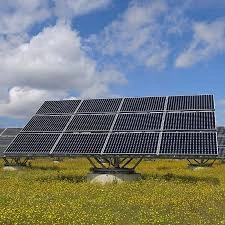solar panel back side
Understanding the Importance of Solar Panel Backsides
In the burgeoning field of renewable energy, solar panels have become a cornerstone technology in the quest for sustainable power generation. While much attention is often granted to the efficiency and performance of the front side of solar panels, the backside of these panels also plays a crucial role that merits examination. This article delves into the significance of the solar panel backside, exploring its materials, functions, and impact on overall solar panel performance.
The Structure of Solar Panels
Solar panels are composed of multiple layers, with the front side primarily focusing on light absorption and energy conversion. Photovoltaic cells situated at the front capture sunlight and convert it into electricity. However, the backside is equally essential for enhancing the panel's efficiency and longevity. Typically composed of materials such as glass, polymer, or aluminum, the backside serves several pivotal functions.
Materials Used in Solar Panel Backsides
The backend of a solar panel is meticulously designed to serve multiple purposes. A common choice for the backside is a polymer-based material, which contributes to both insulation and moisture protection. This insulation is vital as it helps to maintain the temperature of the photovoltaic cells, impacting their performance. The effectiveness of these materials can significantly influence the lifespan of the solar panel. Innovative materials such as TPT (tedlar-polyester-tedlar) are often employed to provide additional shielding against moisture and environmental factors, ensuring the durability of solar panels.
Additionally, researchers are exploring the use of new technologies in backing materials that not only provide structural support but also enhance energy output. For example, some advanced solar panels utilize materials that reflect and redirect stray light back to the photovoltaic cells, thereby increasing overall efficiency.
The Role of the Backside in Efficiency
solar panel back side

One of the critical functions of the backside of a solar panel is to prevent energy loss. When sunlight strikes the panel, a portion of that energy can escape out of the rear, especially in traditional designs. The use of reflective surfaces or coatings on the backside can minimize this loss, allowing previously lost energy to be harnessed and converted into electricity.
Moreover, the backside's design influences how heat dissipates from the solar panel. Excessive heat can lead to what's known as the thermal runaway effect, causing the panel to become less efficient over time. Efficient heat management through effective backside materials helps to maintain optimal operating temperatures, thereby preserving the efficiency rating of solar panels over their lifespan.
Durability and Protection
The durability of solar panels is paramount to their long-term success and user satisfaction. The backside acts as a protective barrier against environmental factors such as moisture, dust, and UV radiation. A well-designed backside can prolong the life of the solar panel by shielding its internal components from degradation. For instance, certain backing materials also provide resistance to weathering, reducing the risk of damage during extreme weather conditions.
In addition, the integrity of the backside plays a significant role in the overall mechanical stability of the panel. Panels that are structurally sound and properly backed are less susceptible to delamination, cracking, and other forms of physical damage, which can affect energy output.
Innovations in Backside Technology
As the solar energy industry continues to evolve, innovations in backside technology are emerging. For instance, bifacial solar panels, which capture sunlight from both sides, are gaining popularity due to their enhanced efficiency. These panels utilize transparent or reflective backsides that can harness ambient light and light reflected from the ground, thereby increasing energy production.
In conclusion, while the front side of solar panels is undeniably important for energy conversion, the backside is equally crucial for optimizing performance, durability, and efficiency. As research and technology advance, understanding the significance of solar panel backsides will be essential for manufacturers and consumers alike. Investing in quality materials and innovative designs for the backside could very well mean the difference between a solar panel that performs adequately and one that excels, making a vital contribution towards a greener, more sustainable future.
-
Understanding the Advantages of Solar String Inverters for Your Energy SystemNewsApr.29,2025
-
Choosing the Right PV Inverter: A Comprehensive GuideNewsApr.29,2025
-
The Future of Solar Power: Exploring Bifacial Solar PanelsNewsApr.29,2025
-
The Complete Guide to Solar Panels: Efficiency, Cost, And InstallationNewsApr.29,2025
-
The Best Options for Efficiency and Cost-EffectivenessNewsApr.29,2025
-
Harnessing the Power of Off-Grid Solar Inverters for Energy IndependenceNewsApr.29,2025







